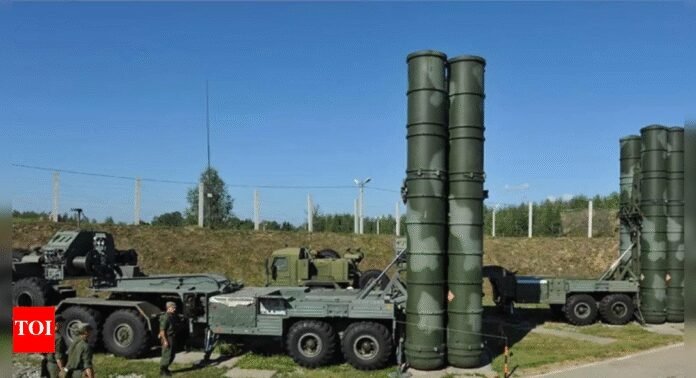NEW DELHI/BENGALURU: The downing of a large Pakistani aircraft in the air during Operation Sindoor was “actually the largest-ever recorded surface-to-air kill by India”, Air Chief Marshal A P Singh said Saturday.Delivering the 16th ACM LM Katre memorial lecture in Bengaluru, Singh said, “One large aircraft, which could be either an ELINT (electronic intelligence) aircraft or an AEW&C (airborne early-warning and control) aircraft, was taken out at a distance of 300km… The S-400 was a game changer for us.”Armed with slides and satellite grabs at Bengaluru that exorcised the “ghost of Balakot” in the recent air-to-ground strikes with credible evidence, ACM Singh also said IAF’s surface-to-air missile systems, primarily the Russian-origin S-400 ‘Triumf’ air defence system, had “five confirmed kills” of Pakistani fighters in the air.The confirmation for all these kills, of course, is only through electronic means, with their blips disappearing from radar screens after being hit by missiles, and not physical since the wreckage of the planes fell in Pakistan.Singh, however, did not quantify the IAF fighter losses during the initial strikes on the nine terror hubs on May 7, which were conducted without suppression or destruction of enemy air defences (SEAD/DEAD) that is typically undertaken before launching any air campaign.Chief of defence staff Gen Anil Chauhan, on the sidelines of the Shangri-La dialogue in Singapore on May 31, had admitted India lost some fighter jets during the initial strikes but then changed tactics (including undertaking SEAD/DEAD) to inflict major damage on Pakistani airbases deep across the border.Other senior officers told TOI that the S-400 system, which has missiles with interception ranges of 120km, 200km, 250km and 380km as well as long-range acquisition and engagement radars, had engaged 16-18 targets in the air during the hostilities.“Apart from the five Pakistani jets and one large aircraft or ‘high-value aerial asset’, the others were incoming large UAVs, cruise missiles and long-range stand-off weapons like the H2 and H4 precision-guided glide bombs,” an officer said.The IAF chief, on his part, said three Pakistani aircraft hangars were also targeted during air-to-ground strikes – UAV hangar at Sukkur, AEW&C hangar at Bholari & F-16 hangar at Jacobabad.The IAF deployed Sukhoi-30MKI, Rafale and Mirage-2000 jets to launch BrahMos supersonic cruise missiles as well as Crystal Maze-2, Rampage and Scalp missiles for calibrated pinpoint strikes.At least one AEW&C aircraft, possibly a Swedish-origin Saab Erieye, and “a few F-16s” were under maintenance inside the Bholari and Jacobabad hangars at that time. “One half of the Jacobabad hangar is gone. I am sure there were some aircraft inside,” ACM Singh said.Other such strikes destroyed two surface-to-air guided weapon sites at Lahore and Okara, two underground command centres at Murid and Chaklala and six radar centres, “some big, some small”, the IAF chief added.Officers said these radar sites were at Sukkur, Lahore, Arifwala, Chunian, Jacobabad and Nayachor. Overall, IAF struck eight air bases like Sargodha, Rahimyar Khan, Chaklala, Rafiqi, Jacobabad, Sukkur, Murid and Bholari, with the runways being especially targeted in the first two. The runway at the Rahimyar Khan airbase, incidentally, is still not operational three months after the strikes.









